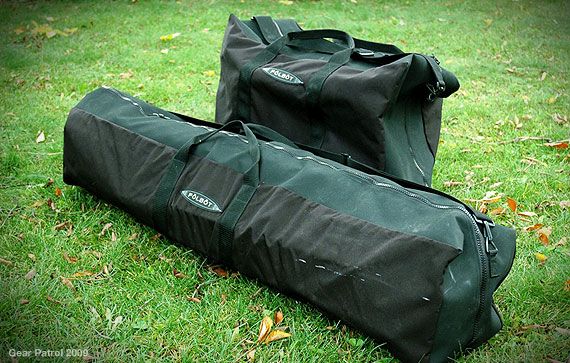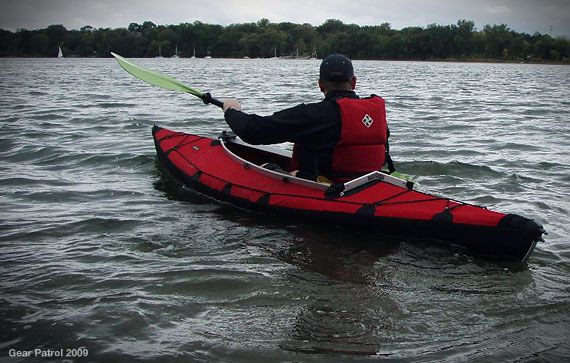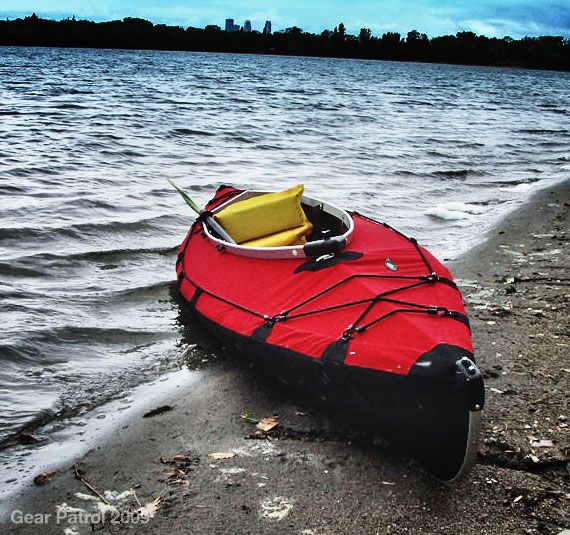
Whether you’re a Manhattan apartment dweller planning your weekend adventure or a hardened explorer planning your next expedition, we have the kayak for you. Here’s a boat that packs into two airline-(or yak-)friendly duffel bags, assembles in about 20 minutes, and will haul up to 300 pounds of paddler and gear.
Folbot is a South Carolina company that specializes in folding kayaks and they offer a variant for just about any paddler. The basic architecture of Folbot’s kayaks is a skeletal aluminum frame that is assembled and then fitted into the heavy duty nylon and rubber skin. Inflatable sponsons built in to the skin provide buoyancy while a folding aluminum seat frame with inflatable padding snaps into place in the cockpit. Too good to be true? Read on.
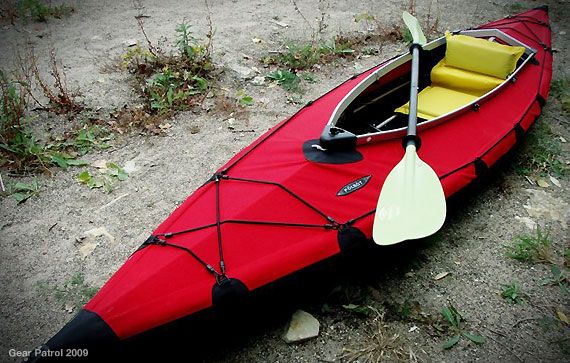
The Yukon is Folbot’s expedition-ready rig, with a large cockpit and huge weight capacity. Assembly seemed a bit intimidating when I first opened the duffels. The heap of aluminum tubing that tumbled onto the floor and the flimsy instruction manual didn’t inspire confidence. But with minimal head-scratching, I had the boat together in an hour on my first attempt. The instructions, while lacking in much graphic aid, were easy to follow and the parts all snapped into place as promised. When the frame pieces were inserted into the skin, the boat came alive. After inflating the sponsons and seat, I was ready for the maiden voyage.
Weighing 42 pounds when built, the Yukon is easy to portage on a shoulder, though for any distance, some padding on the cockpit edge would be nice. Once at the water’s edge, Folbot recommends that you enter and exit the boat while it’s floating as opposed to dragging or launching it across a rocky put-in. This advice is purely for the longevity of the boat since the heavy-duty rubber hull can take just about anything you could throw at it.
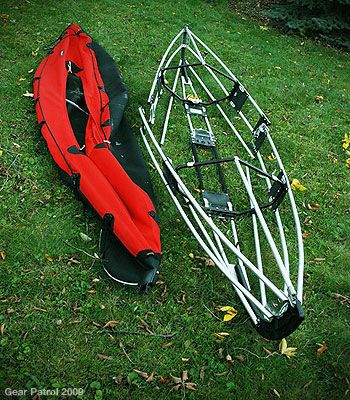
Initial stability is excellent, with little drama while stepping in and getting seated. Once on the water, the Yukon paddles like the best of its rigid brethren. At 13 feet, it tracks like a longer boat even without its optional rudder. A few strokes and I had a good wake behind me and good secondary stability meant no rocking or sloshing about. Though I didn’t load my Yukon down with gear, it sat well out of the water and could easily have taken 50 pounds of gear, either stashed under the decking in front or rear or lashed to the deck with bungees.

